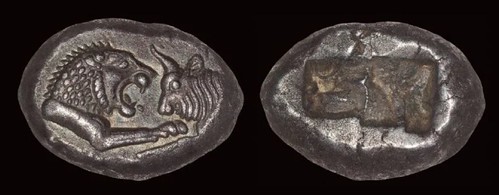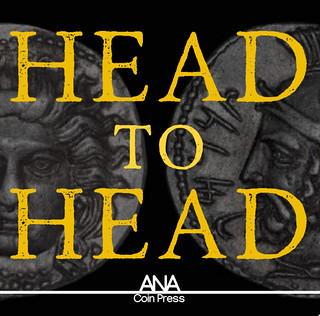
PREV ARTICLE
NEXT ARTICLE
FULL ISSUE
PREV FULL ISSUE
POLITICS OF ANCIENT NUMISMATICSThe November 2020 American Numismatic Association blog features a 2017 Numismatist article by John Nebel. Here's an excerpt, but we sure to read the complete piece online. -Editor
Politics and coinage are inextricably linked. In the ancient Greek world, coins were issued by poleis (city-states), kingdoms or the Persian Empire. In terms of sheer quantity, poleis dominated, and perhaps as many as 700 issued their own coins. Such pieces usually depicted or otherwise honored the god or hero who protected the city's populace, or featured a design immediately recognizable as the badge of the polis. Even today, politics influences numismatics and collectors. I experienced this firsthand when U.S. Customs and Border Protection (CBP) detained and held three ancient coins I had purchased in a numismatic auction in Switzerland: a Lydian stater, an Akanthos tetradrachm and a Tarsos stater. In the course of an apparently random audit, the government agency took an interest in these coins on October 12, 2016, when the pieces entered the United States in a Federal Express® package. A customs agent said my numismatic shipment was not the only one being reviewed, assuring me that I had not been deliberately singled out. Nevertheless, once CBP decided to take a look, it was thorough. The usual documents provided by the auction house were not enough. As one CBP agent stated, "[The auctioneers] don't necessarily know if the coins were stolen." In December 2016, I received a detention form that verified the coins were in CBP's possession, "just so you know we haven't lost them," a customs official explained. A phone call from a CBP agent in early February clarified what was necessary to obtain the coins' release. Foremost, it required documentation that the tetradrachm had left Greece before November 21, 2011, and that the two staters were outside Turkey before April 21, 1981. The CBP considered the latter coins to be Turkish, because that country governs the land formerly occupied by the mint where they originally were struck. Alternatively, CBP could ask the Turkish government via the U.S. attaché in Athens whether the coins, potentially subjects of a 1906 Ottoman imperial decree, had been removed illegally from Turkey (the successor of the Ottoman empire) and therefore were state property.

Lydia, Kroisos silver stater (561-546 B.C.). Photos: John Nebel
Coin Stories Kroisos added the bull, originally conjoined with the lion head. This soon was replaced by the confrontational image—more natural and certainly more striking. At the same time, Kroisos initiated a practical change—a bimetallic coinage system of gold and silver. Herodotus wrote, "[The Lydians] are the first of the men of whom we know to cut and use a currency of gold and silver." The value of the silver issues was low enough to allow their use in everyday commerce, while the coins of both metals were close enough in size, according to Ian Carradice in Coinage and Administration in the Athenian and Persian Empires, that "dies are shared between examples with different sizes and weights, and between gold and silver pieces."
John is the backbone of all Numismatic Bibliomania Society online efforts, having offered free hosting for our website since the beginning, and working with us on every upgrade. Our site now hosts a complete archive of over 30,000 E-Sylum articles, made possible by his continued generous support. He's quite a numismatic photographer as well, as evidenced by the photos in his article. Check it out. -Editor
To read the complete article, see:

Wayne Homren, Editor The Numismatic Bibliomania Society is a non-profit organization promoting numismatic literature. See our web site at coinbooks.org. To submit items for publication in The E-Sylum, write to the Editor at this address: whomren@gmail.com To subscribe go to: https://my.binhost.com/lists/listinfo/esylum All Rights Reserved. NBS Home Page Contact the NBS webmaster 
|
